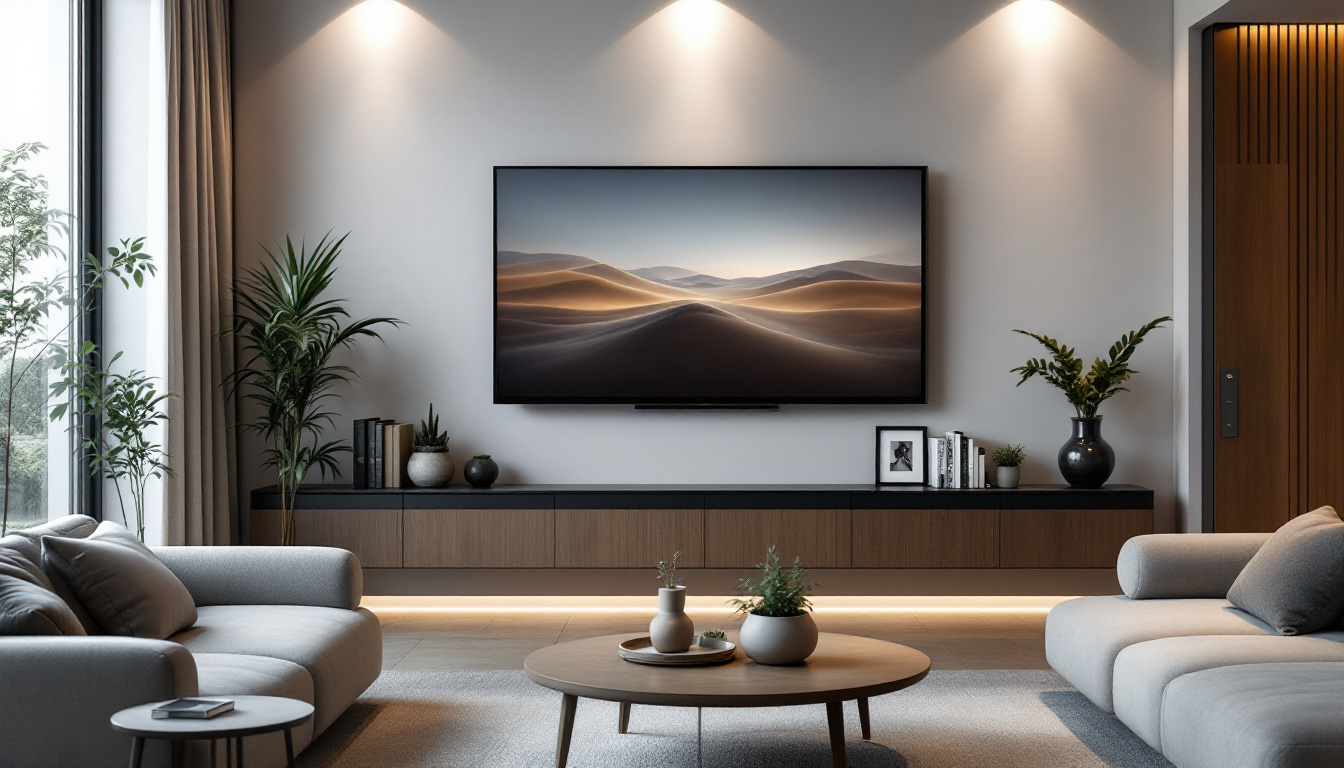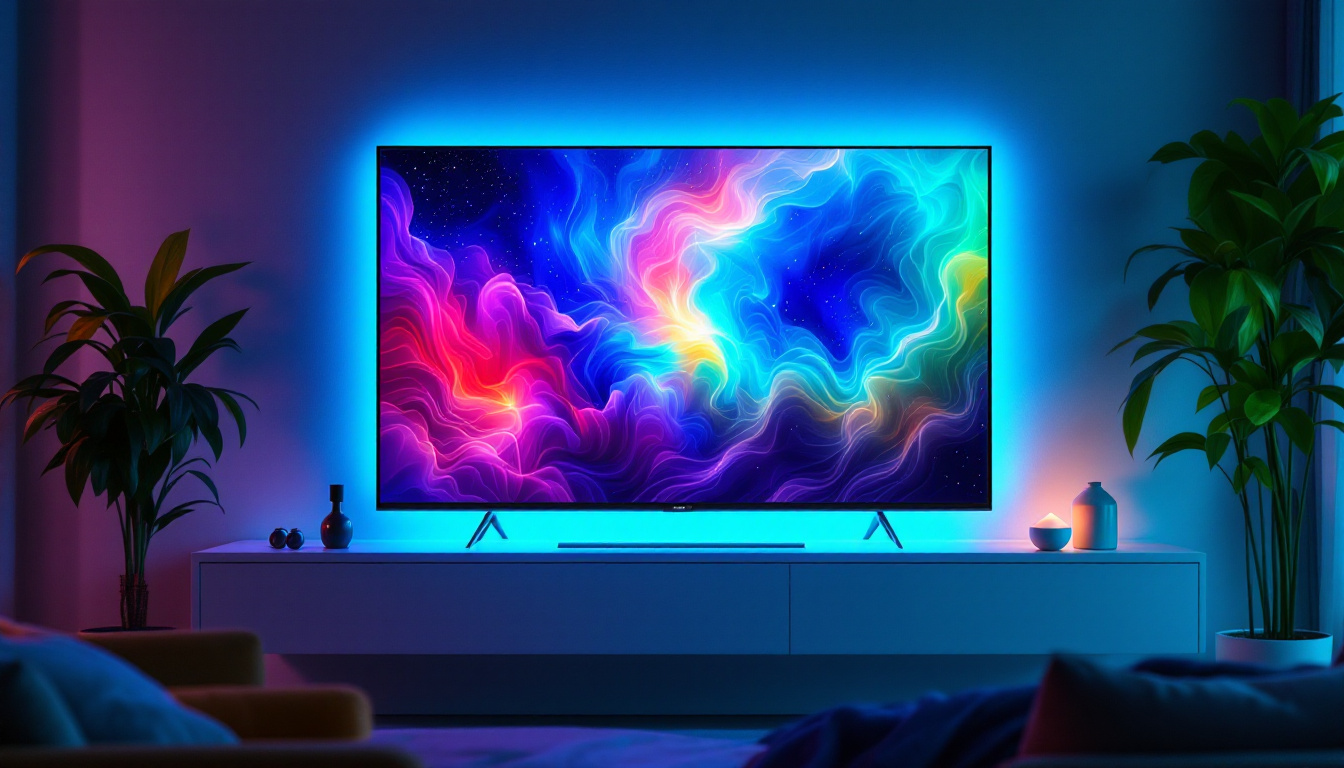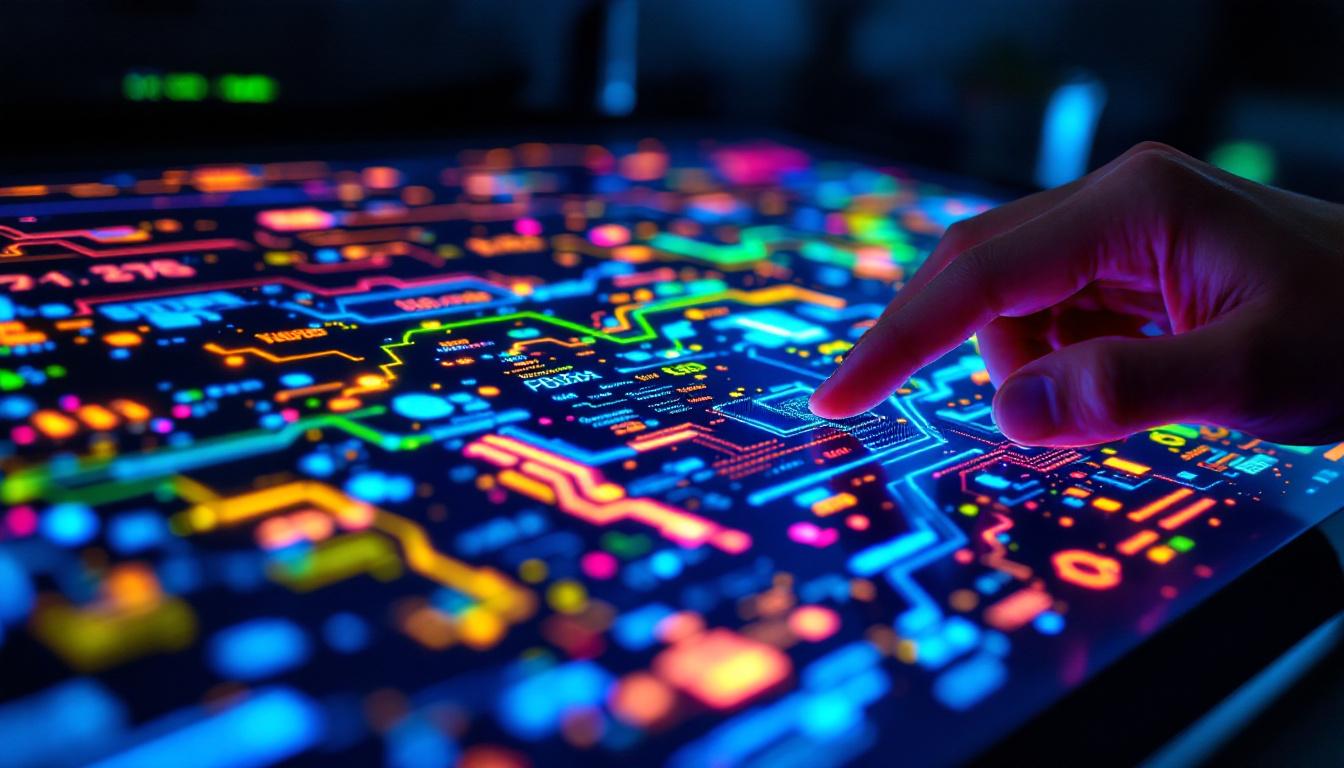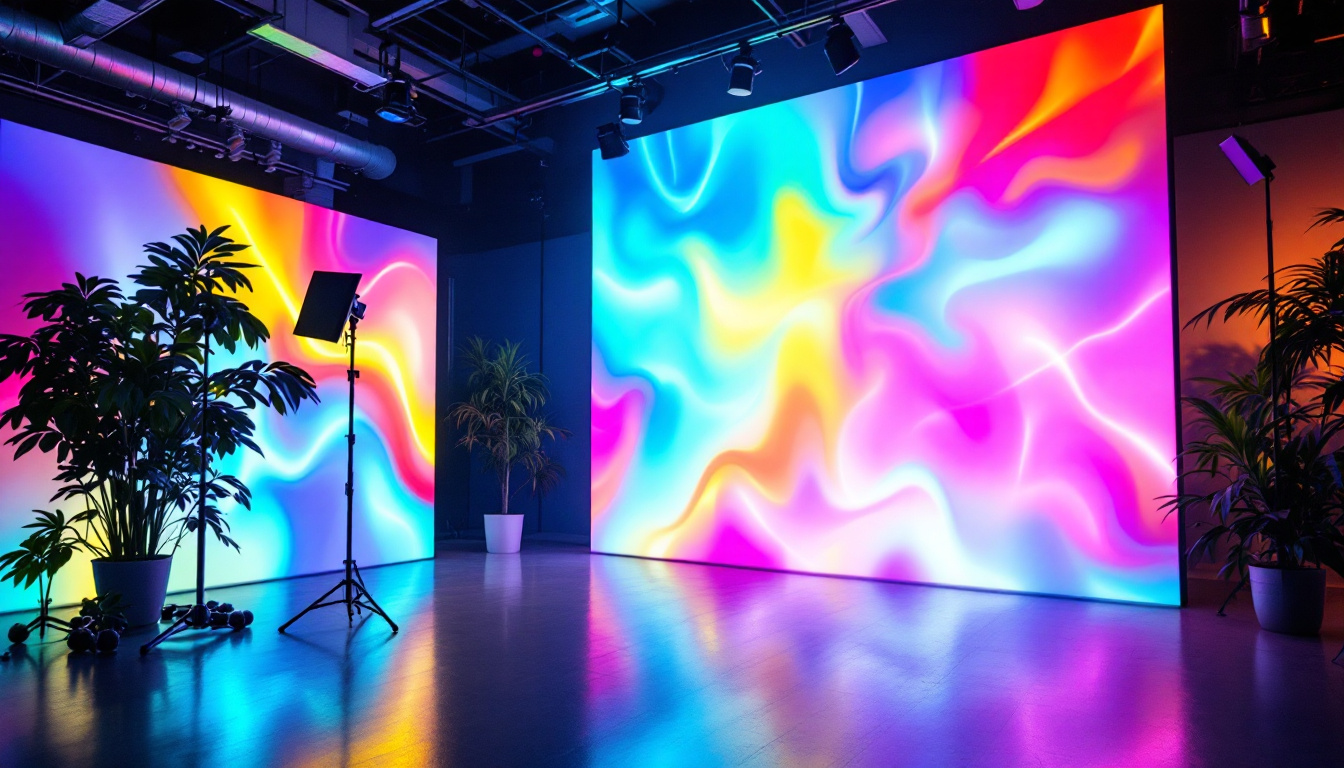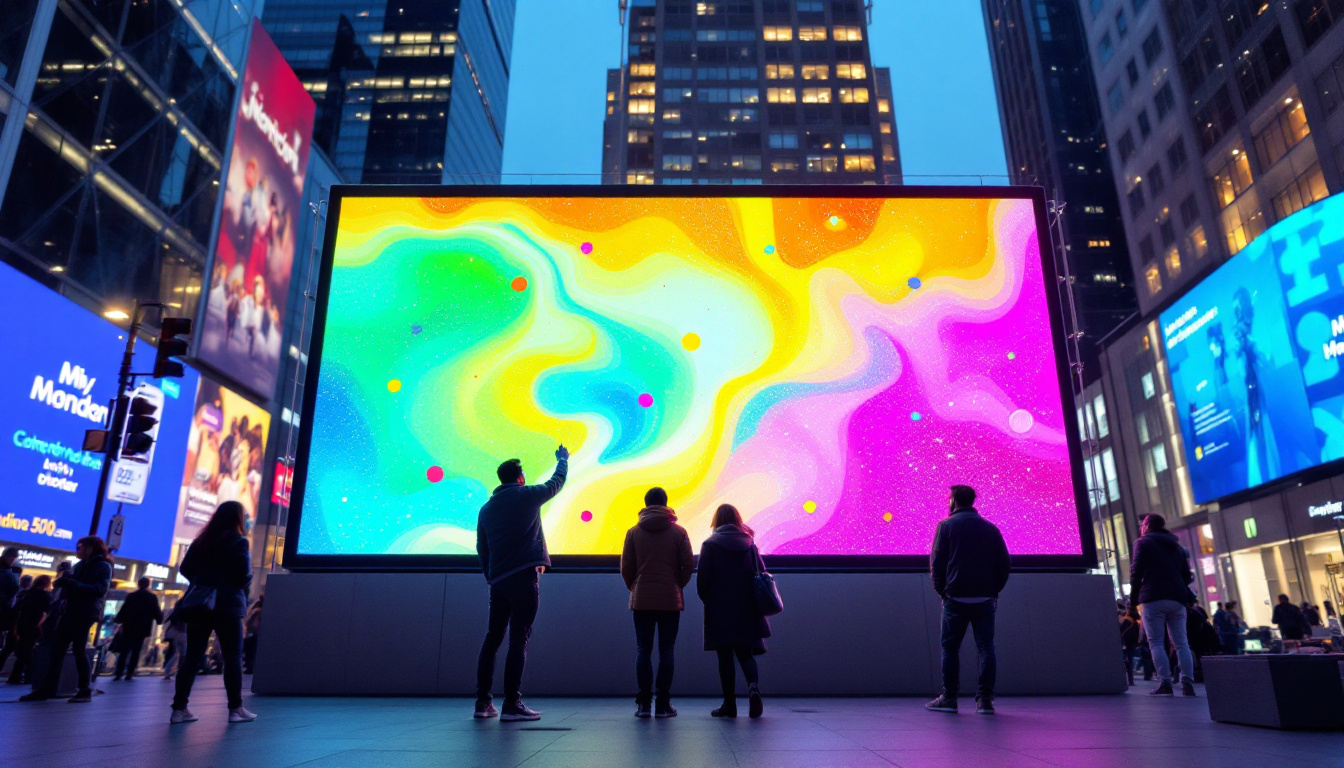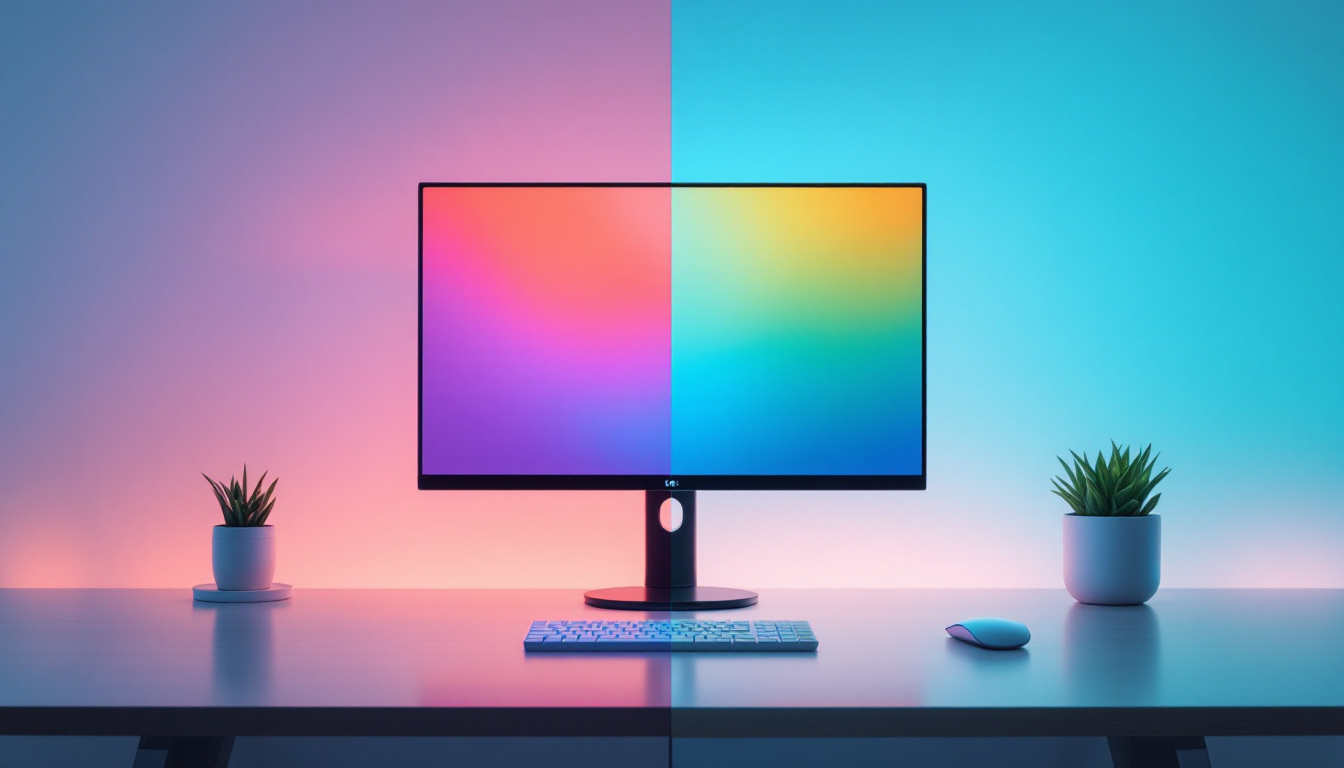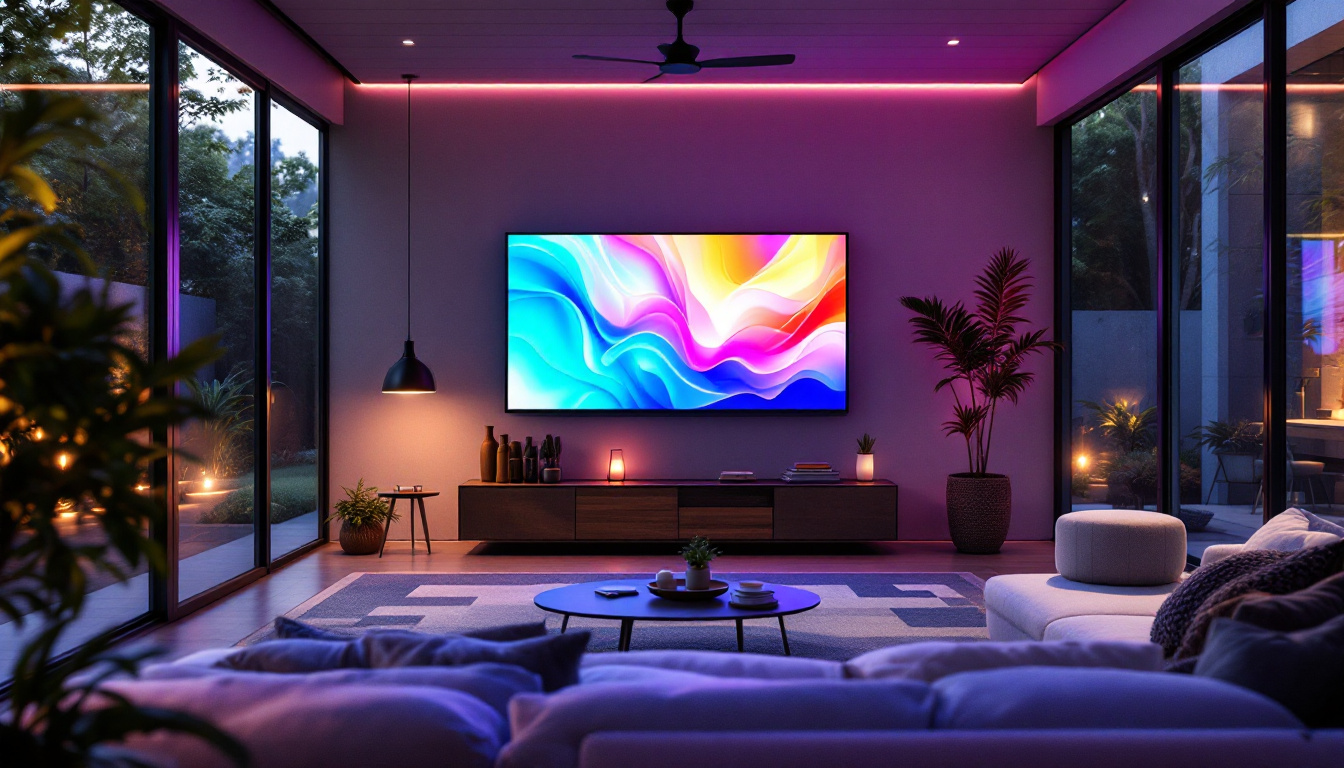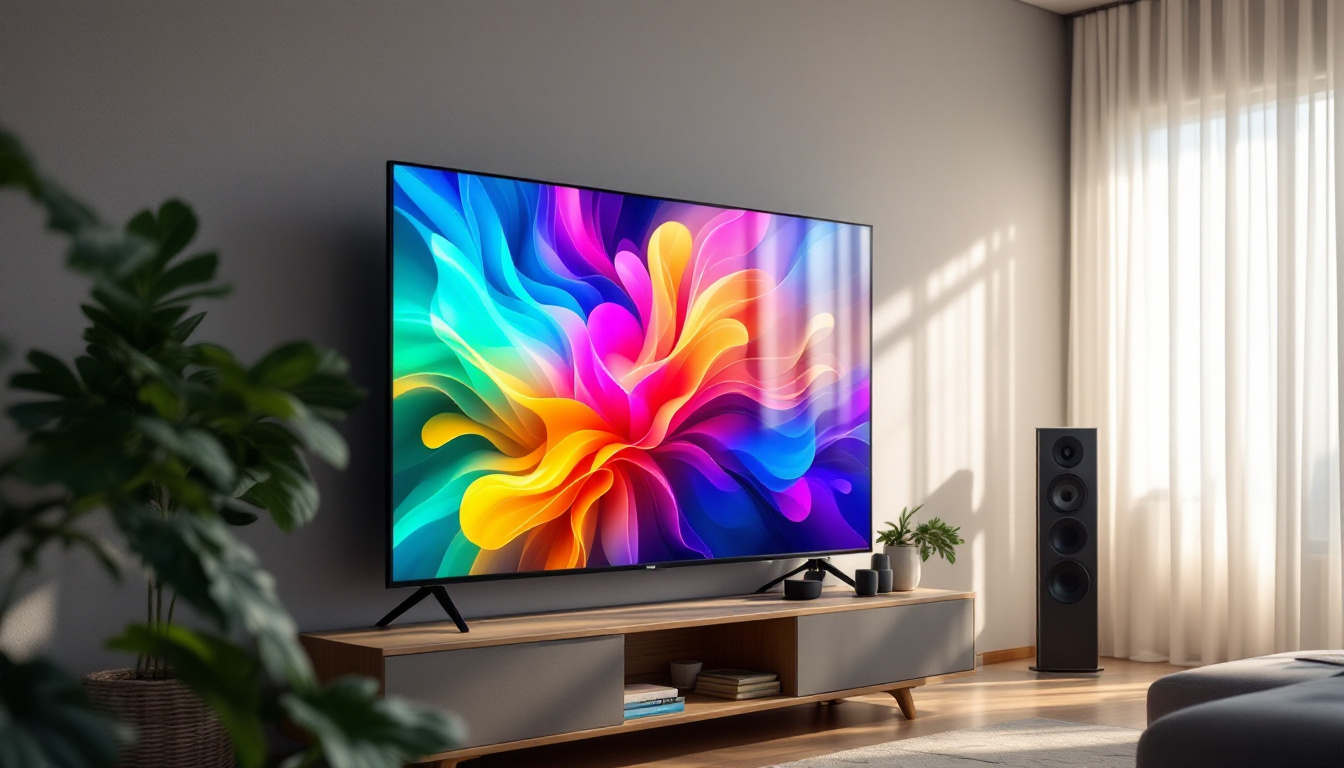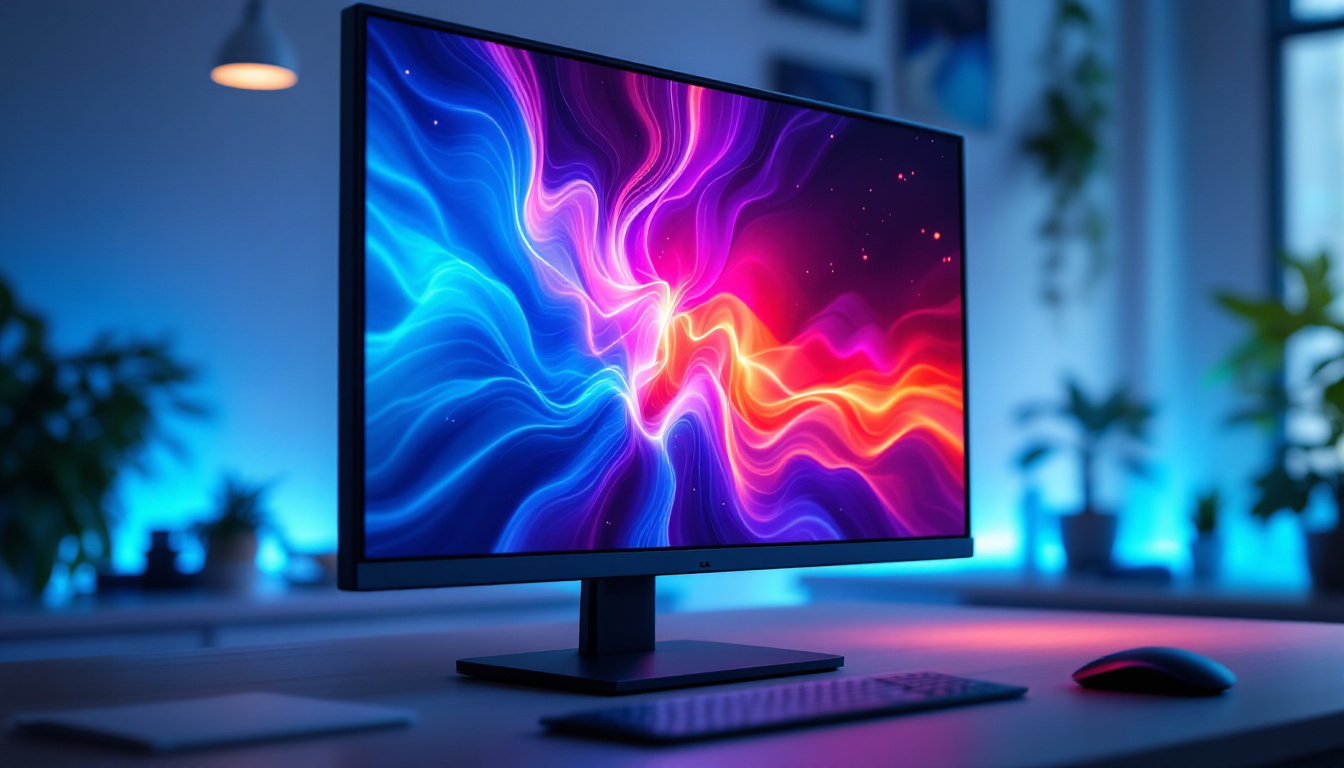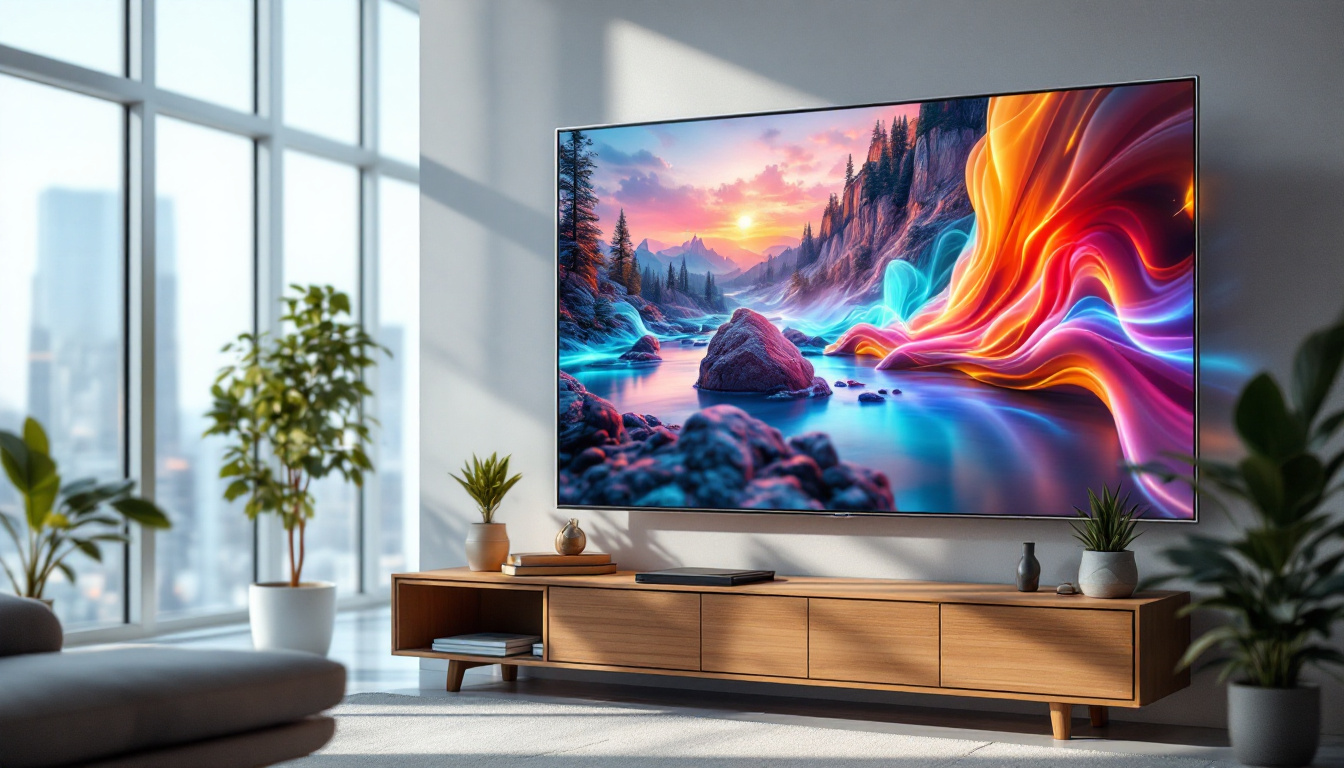In the ever-evolving landscape of technology, touch screen monitors have become a staple in various industries, enhancing user interaction and experience. Among the different types of touch screen technologies available, infrared touch screen monitors stand out due to their unique operational mechanisms and advantages. This article delves into the intricacies of infrared touch screen monitors, particularly focusing on their LED display capabilities, applications, and benefits.
Understanding Infrared Touch Screen Technology
Infrared touch screens utilize a grid of infrared light beams that are projected across the screen’s surface. When a user touches the screen, the interruption of these beams is detected, allowing the system to register the touch input. This technology is not only intuitive but also highly responsive, making it suitable for various applications.
How Infrared Touch Screens Work
The functioning of infrared touch screens is based on a simple yet effective principle. The screen is embedded with an array of infrared emitters and detectors. These components create an invisible grid of light beams across the display. When an object, such as a finger, comes into contact with the screen, it interrupts the beams, and the system calculates the location of the touch based on which beams were disrupted.
This method of touch detection allows for multi-touch capabilities, enabling users to perform gestures such as pinch-to-zoom or rotate, enhancing the overall user experience. Moreover, infrared touch screens do not require a physical overlay, which can lead to improved clarity and brightness compared to other touch technologies. This clarity is especially beneficial in environments where lighting conditions can vary significantly, as the screen remains visible even in bright sunlight or low-light settings.
Advantages of Infrared Touch Screens
Infrared touch screens offer several advantages that make them appealing for various applications. One of the most notable benefits is their durability. Since they do not rely on physical pressure or a specific material for touch detection, they are less prone to wear and tear. This makes them ideal for environments where heavy usage is expected, such as public kiosks or industrial settings.
Additionally, infrared touch screens are highly versatile. They can be used with gloves or styluses, making them suitable for a wide range of environments, including healthcare facilities and outdoor applications. The absence of a physical touch layer also allows for superior image clarity and brightness, enhancing the visual experience for users. Furthermore, infrared touch screens are resistant to scratches and damage from contaminants, which is particularly advantageous in settings where hygiene is a priority, such as hospitals or food service areas. Their ability to maintain functionality in diverse conditions, including exposure to dust or moisture, further solidifies their role as a reliable choice for both commercial and industrial applications.
The Role of LED Displays in Infrared Touch Screens
LED displays play a crucial role in the functionality and performance of infrared touch screen monitors. The combination of infrared technology and LED display technology results in a powerful interactive experience that is both visually appealing and highly functional.
Benefits of LED Displays
LED displays are known for their vibrant colors, high contrast ratios, and energy efficiency. When integrated with infrared touch technology, they enhance the overall user experience. The brightness of LED displays ensures that content is easily visible, even in brightly lit environments, making them suitable for both indoor and outdoor use.
Moreover, LED displays have a longer lifespan compared to traditional LCDs. This longevity, combined with their low power consumption, makes them an economical choice for businesses looking to invest in durable technology. The combination of LED displays with infrared touch technology ensures that users receive a responsive and visually stunning interface.
In addition to their impressive longevity and energy efficiency, LED displays also offer superior viewing angles. This characteristic is particularly beneficial in environments where multiple users may need to view the screen simultaneously, such as in classrooms or conference rooms. The wide viewing angles ensure that everyone can enjoy the same high-quality visuals without distortion, enhancing collaborative efforts and group interactions.
Applications of Infrared Touch Screen Monitors with LED Displays
The versatility of infrared touch screen monitors with LED displays allows them to be utilized across various sectors. In retail, these monitors can be employed for interactive displays, enabling customers to browse products and access information easily. In educational settings, they serve as interactive whiteboards, enhancing the learning experience through engaging content and collaborative features.
Furthermore, in healthcare environments, these monitors facilitate patient interaction with information systems, allowing for easy access to medical records and appointment scheduling. The ability to operate effectively in diverse conditions, combined with their durability, makes infrared touch screens with LED displays a preferred choice in many industries.
Additionally, the integration of LED displays with infrared touch technology extends to the entertainment industry, where they are used in interactive kiosks and gaming stations. These setups not only attract users with their bright and engaging visuals but also provide an intuitive interface that enhances user engagement. The seamless interaction offered by infrared touch capabilities allows for a more immersive experience, whether it’s in a theme park, arcade, or interactive museum exhibit, making technology not just functional but also a key part of the entertainment experience.
Comparing Infrared Touch Screens with Other Technologies
While infrared touch screens offer numerous advantages, it is essential to compare them with other touch technologies to understand their unique position in the market. The most common alternatives include capacitive and resistive touch screens, each with its own set of features and benefits.
Capacitive Touch Screens
Capacitive touch screens operate based on the electrical properties of the human body. When a finger touches the screen, it alters the electrostatic field, allowing the system to detect the touch. Capacitive screens are known for their high sensitivity and multi-touch capabilities, making them ideal for smartphones and tablets.
However, they may not perform well in wet conditions or when users wear gloves, which can limit their usability in certain environments. In contrast, infrared touch screens excel in these scenarios, providing a more versatile solution for diverse applications.
Resistive Touch Screens
Resistive touch screens consist of two flexible layers separated by a small gap. When pressure is applied, the layers make contact, registering the touch. While resistive screens are cost-effective and work well with styluses and gloves, they do not support multi-touch gestures and can be less responsive than their infrared counterparts.
Infrared touch screens, with their ability to detect touch without physical pressure, offer a more advanced and responsive experience, making them a preferred choice for many applications.
Installation and Maintenance of Infrared Touch Screen Monitors
Installing and maintaining infrared touch screen monitors is relatively straightforward, but there are specific considerations to ensure optimal performance. Proper installation is crucial to avoid issues such as misalignment or interference from external light sources.
Installation Guidelines
When installing an infrared touch screen monitor, it is essential to follow the manufacturer’s guidelines closely. This includes ensuring that the screen is mounted securely and that the infrared emitters and detectors are aligned correctly. Additionally, the installation location should be chosen carefully to minimize interference from ambient light, which can affect touch detection.
It is also advisable to test the monitor after installation to ensure that all touch functions are working correctly. Regular calibration may be required to maintain accuracy, especially in high-traffic environments where the monitor may be subject to frequent use.
Maintenance Tips
Maintaining infrared touch screen monitors involves regular cleaning and occasional calibration. The screen should be cleaned with a soft, lint-free cloth and a suitable cleaning solution to avoid scratching the surface. It is essential to avoid abrasive materials that could damage the screen.
Calibration may be necessary if the touch response becomes inaccurate over time. Many monitors come with built-in calibration tools that guide users through the process, ensuring that the touch functionality remains precise and reliable.
Future Trends in Infrared Touch Screen Technology
The future of infrared touch screen technology looks promising, with ongoing advancements aimed at enhancing performance and user experience. As technology continues to evolve, several trends are emerging that could shape the future of infrared touch screens.
Integration with AI and Machine Learning
One of the most exciting trends is the integration of artificial intelligence (AI) and machine learning into touch screen technology. These advancements could enable monitors to learn user preferences and behaviors, allowing for a more personalized and intuitive interaction. This could lead to smarter interfaces that adapt to the needs of individual users, enhancing the overall experience.
Enhanced Durability and Performance
As industries demand more robust solutions, manufacturers are focusing on enhancing the durability and performance of infrared touch screens. Innovations in materials and design could lead to screens that are not only more resistant to wear and tear but also capable of functioning in extreme conditions, such as high temperatures or humidity.
Furthermore, improvements in energy efficiency and power consumption will likely continue, making infrared touch screens an even more attractive option for businesses looking to reduce operational costs.
Conclusion
Infrared touch screen monitors with LED displays represent a significant advancement in interactive technology, offering a blend of durability, versatility, and user-friendly features. Their unique operational mechanism, combined with the vibrant visuals of LED technology, makes them suitable for a wide range of applications across various industries.
As the technology continues to evolve, the future of infrared touch screens looks bright, with potential enhancements that could further improve user interaction and experience. Whether in retail, healthcare, or education, infrared touch screen monitors are poised to play a crucial role in shaping the way users engage with technology.
Discover LumenMatrix’s Advanced LED Display Solutions
Ready to elevate your interactive technology experience? LumenMatrix, a pioneer in LED display innovation, offers an extensive array of LED display modules designed to transform your brand’s visibility and captivate your audience. From Indoor and Outdoor LED Walls to specialized solutions like Vehicle Displays, Sports Displays, and even Custom LED configurations, LumenMatrix is committed to revolutionizing visual communication. Enhance your engagement and deliver your message with unparalleled clarity. Check out LumenMatrix LED Display Solutions today and see the difference cutting-edge technology can make.




